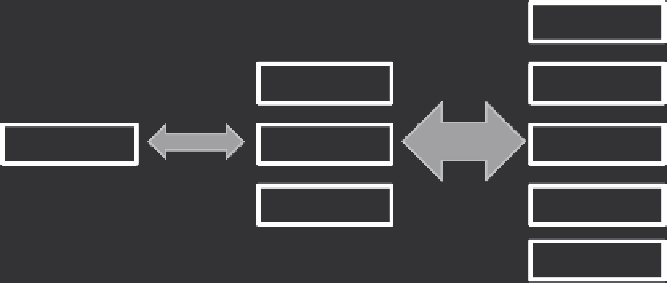Database Reference
In-Depth Information
Supervisor
ZooKeeper
Supervisor
Nimbus
ZooKeeper
Supervisor
ZooKeeper
Supervisor
Supervisor
FIGURE 12.7
Storm cluster.
In addition to the supported built-in stream grouping mechanisms, the Storm sys-
tem allows its users to define their own custom grouping mechanisms.
In general, a Storm cluster is superficially similar to a Hadoop cluster. One key
difference is that a MapReduce job eventually finishes while a Storm job processes
messages forever (or until the user kills it). In principle, there are two kinds of nodes
on a Storm cluster:
•
The Master node
runs a daemon called
Nimbus
(similar to Hadoop's
JobTracker), which is responsible for distributing code around the cluster,
assigning tasks to machines, and handling failures.
•
The
Worker nodes
run a daemon called the
Supervisor
. The supervisor lis-
tens for work assigned to its machine and starts or stops worker processes
as necessary based on what Nimbus has assigned to it.
Figure 12.7 illustrates the architecture of a Storm cluster. In a Storm cluster all
the interactions between Nimbus and the Supervisors are done through a
ZooKeeper
cluster, an open-source configuration and synchronization service for large distrib-
uted systems. Both the Nimbus daemon and Supervisor daemons are fail-fast and
stateless, where all state is kept in ZooKeeper or on local disk. Communication
between workers living on the same host or on different machines is based on
ZeroMQ
sockets* over which serialized java objects (representing tuples) are being
passed. Some of the feature of ZeroMQ include
•
Socket library that acts as a concurrency framework
•
Faster than TCP, for clustered products and supercomputing
•
Carries messages across inproc, IPC, TCP, and multicast
•
Asynch I/O for scalable multicore message-passing apps
•
Connect N-to-N via fanout, pubsub, pipeline, request-reply
*
http://www.zeromq.org/.

Search WWH ::

Custom Search